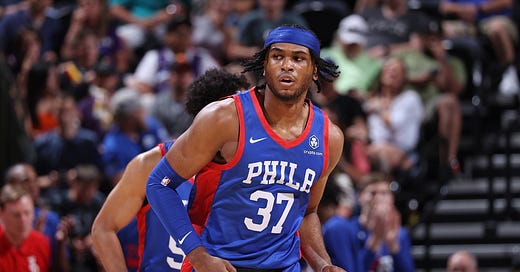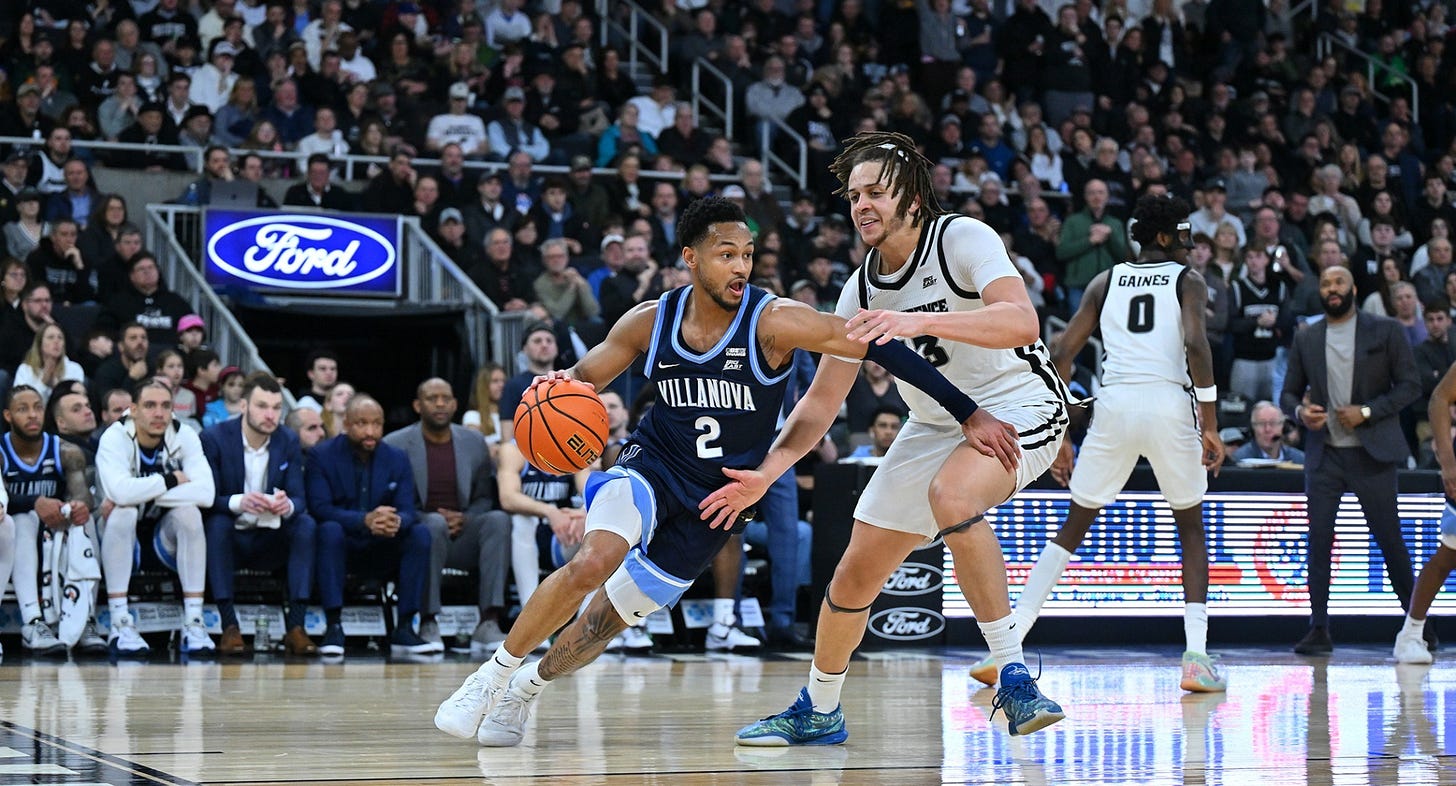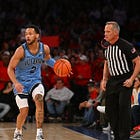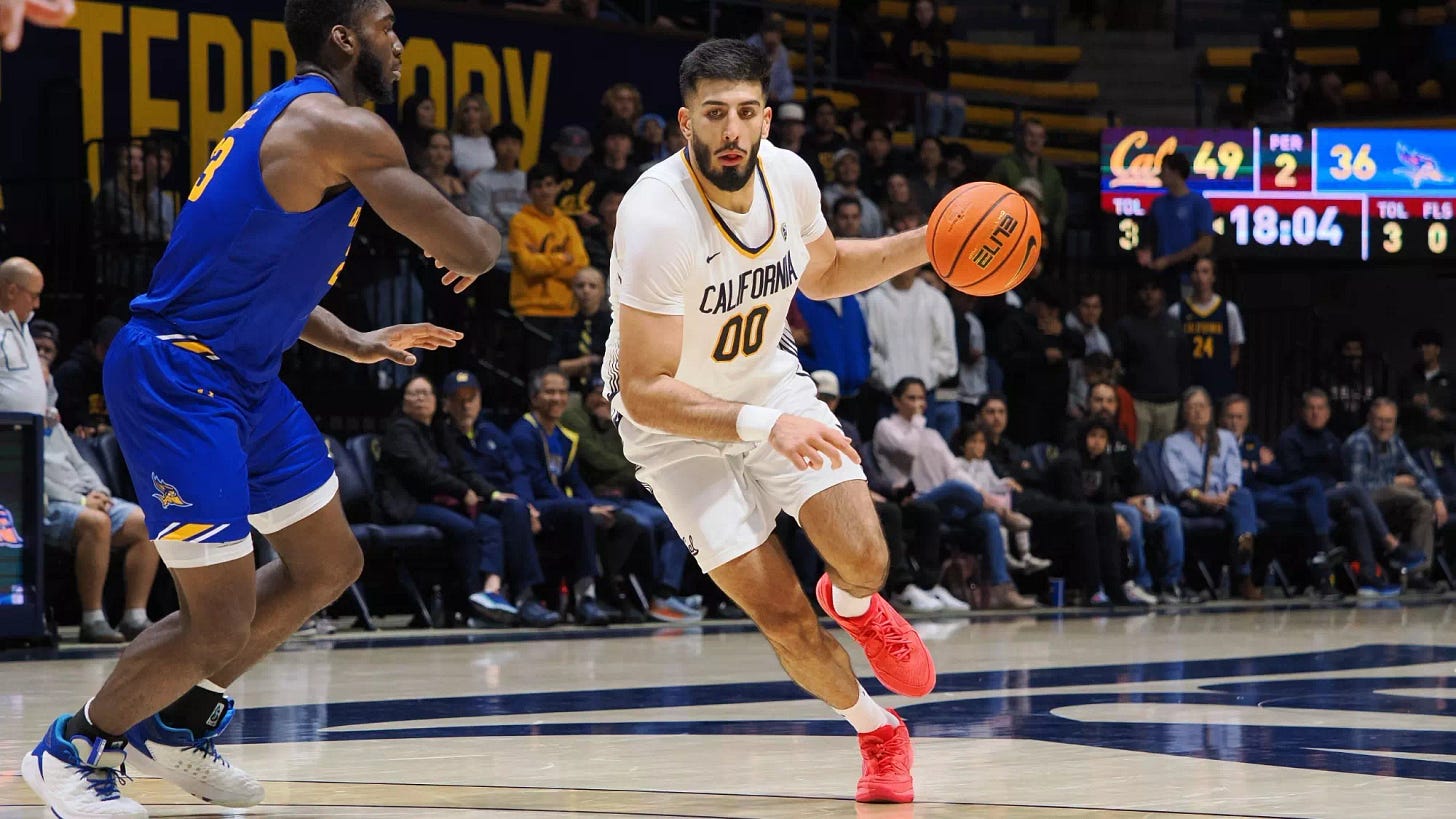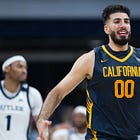Undrafted Free Agency Guide Part II
After a successful part one, here are another five names you must know more of before draft night. Each year has its undrafted free agency success stories. Better tap in early rather than be too late.
Every team wants to find their version of Ricky Council IV (Philadelphia 76ers) and Craig Porter, Jr. (Cleveland Cavaliers) or Orlando Robinson (Miami Heat); guys who join as undrafted free agents but end up signing standard contracts.
After the first five names in the first edition, it’s to expand the list with five more candidates. With a few days left until the draft, we usually see teams quickly signing undrafted free agents to Exhibit 10 or two-way contracts. Therefore, it’s best to be in early, rather than trying to figure out who the freshly-signed players are after the matter.
With over 80 in-depth scouting reports containing over 2,500 words, Ersin’s NBA Draft Newsletter has become a ‘one-stop-shop’ for NBA Draft content for many. While growing the newsletter from zero to over 400 subscribers, the goal is to continue growing it by valuing quality over quantity.
The draft should be accessible to everyone. With bigger media outlets focusing on the ‘top guys’, I want to create an even playing field by focusing on the less-coveted prospects. Every year has success stories outside the lottery, so why not be among the selective people who saw it coming from miles away?
My goal for the 2025 NBA Draft is to have over 100 in-depth scouting reports. Trust me, I get a thrill from every single subscription. Eventually, the goal is to make the newsletter cost-neutral, thus forcing me to change to the scouting reports being available to paying subscribers. As a thank you for your support, here’s 20% off on me.
And if you want to give Ersin’s NBA Draft Newsletter an additional boost, please consider providing an amount you choose as a Team Ersin Demir member.
1. Mark Armstrong — Villanova
Not an unknown commodity by any means, but one who was less coveted as an NBA prospect. Traditionally, Villanova guards tend to stay there for years, whereas Armstrong enters the draft as a sophomore.
He’s a below-average shooter who doesn’t project to put up good numbers right away. His offensive role is limited to connective passing and making plays out of closeouts. That’s fine as long as the team’s built around high-usage wings, where the guard solely focuses on structuring the offense and complementing its stars.
As a defender, his screen navigation will lead to a team’s defensive rating going down with him on the floor. Together with his shooting off the catch. That’s the most crucial area of his development in deciding if he can stick in the league. An NBA decision-maker will gladly bet on his high level of defensive footwork and positioning while fitting in a low-usage role. Therefore, we might see Armstrong as one of the early two-way contracts among undrafted free agents.
Here’s an in-depth scouting report on his NBA role:
2. Fardaws Aimaq — California
Aimaq comes in with an NBA-ready body while being one of the best rebounders in college basketball. Other separators among his peers in this class are his screening and passing. With more teams looking for more versatility from their fives, Aimaq fits the mold of playing in a specific role to give quality minutes off the bench.
As a screener, he’s functioning as a brick wall rather than only forcing defenders to make a decision. He’s good at timely rolling to the basket, but that is not where NBA teams will use him. As a passer, he shows offensive creativity and great touch, making him suitable to play as a five in an offense that focuses on ball movement. He makes quick decisions after the catch leading to him keeping the offense fluid. His court vision and feel for the game as a passer led to him continuously hitting cutters in his playmaking duties at California.
His touch at the rim could improve, where he was forcing shots more often than not. That is partially on him and partially on the offensive scoring load he had to carry. More teams are struggling with their defensive rebounding percentages off the bench. Therefore, Aimaq can come in to fix that right away, with his value as a screener, passer, and play-finisher. He’s one of the candidates who will sign an Exhibit 10 contract to earn a call-up later in the season.
3. Sy Chatman — Buffalo
Chatman is one of the more underrated defensive wing prospects in this class. At 6’8”, he has the ideal size to play as a three, while he’ll also serve as a four in certain lineups. With his 227 pounds, he has a well-filled frame with a strong upper-leg area. His fluid hips and decent mobility combined with the above-mentioned are the base to evolve into a multipositional wing defender in the NBA.
After a medical redshirt, Chatman returned for his fifth year of college basketball. In his year off, he worked on developing his three-point jumper, which is a must-have for him to keep a team’s offensive rating at par while playing in a reduced role. After taking 35 threes in his first four years, Chatman improved the sample size to 144 three-point attempts, converting them at a 25.7% rate.
At 26 years old, he’s one of the older players in this class. That doesn’t take away that an NBA team will add him to its G League roster. The emphasis will be on developing his three-point shot, where he can continue to bank on his improvement in his last year of college.
If he can convince NBA decision-makers with efficient numbers in the G League, his does-it-all type of defensive presence will lead to him earning a roster spot at the end of the bench later in the season. Versatile defenders with experience and a neutral impact on a team’s offensive rating will become intriguing for teams looking for depth in preparation for their playoff run.
4. Tyler Thomas — Hofstra
At over 1,000 three-point attempts in his five years of college, Thomas fits the bill of NBA-ready shooters. He shot over 37% on over ten attempts per game this season. For comparison, he shot over 40% the year before but totaled for close to a hundred attempts less. In a class with a lack of depth among its shooters, Thomas’ experience and outlier shooting skill make him an intriguing option in undrafted free agency.
Thomas’ shot-creation ability at 6’3” focuses on rim pressure and drawing contact near the rim. While converting 86.1% on over three free throws per game, he can break down a defense off the dribble, showing good handles that could lead to him expanding the role in a scoring-focused G League game. He gets his attempts using his toughness over craft. In terms of offensive creativity, Thomas is a predictable shooter who struggled with his shot selection as Hofstra’s number-one scoring option.
At 24 years old, Thomas needs to work on his shot selection while embracing a reduced role on a G League roster. In a ball-heavy game, it’s tough to get an NBA job, whereas if he combines his off-the-catch shooting with secondary creating and scorer duties. Thomas will likely earn a call-up later on in the season.
5. Daniss Jenkins — St. John’s
With a lack of depth among leading guards, Jenkins solidifies himself as one of the top prospects to earn a two-way contract. After putting up 15 points and five assists while starting every game for Iona the season before, he followed Coach Pitino to St. John’s, where he put up similar numbers. He earned All-MAAC First Team and All-Big East Second Team honors, crowning his great performances in both years.
Jenkins is a scalable leading guard who can serve as a spot-up shooter. He’s a smart cutter at 6’3.25”, and shows reliable shooting off the catch. With good size to play as a two-guard, Jenkins’ pick-and-roll playmaking and connective passing are among the better guards in this class. Teams that keep the ball moving will benefit from Jenkins at the helm. His ability to execute live-dribble reads shows some untapped potential for teams to develop. He’s still young for a fourth-year senior, as he’ll turn 23 around Summer League.
Areas to work on for Jenkins are his screen navigation. In a switch-heavy NBA game, Jenkins will have to serve as a pick-and-roll defender often. That’s a must-have to continue to get better at in the G League. Where Jenkins was a ball-dominant guard at Iona, he got more accustomed to sharing the ball-handling duties among his teammates at St. John’s, a positive development that has to continue in the G League.
Rafael Barlowe from NBA Big Board has a great piece written on Daniss Jenkings:

